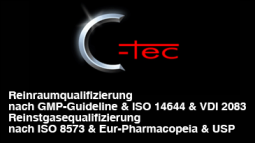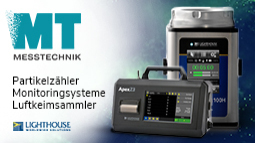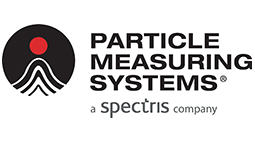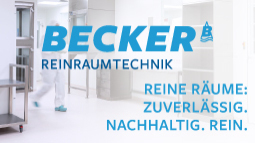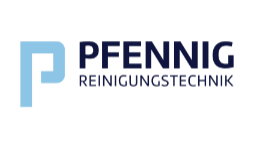Nicolaas A.W.J. Thevissen
Particle Deposition Monitoring
Particle deposition measurements are based on the surface inspection measurements techniques as developed for the automotive industry around the change of the century. Industry awareness about the influence of particle deposition measurements has defined a clear demand for equipment. This papier describes the dedicated equipment on the market around 2016.
Introduction
Particle deposition on critical surfaces forms a significant risk factor for the functioning of precision equipment and reduces the yield in semiconductor manufacturing plants. The maximum allowed particle deposition in the industry is often simply defined as the number of visible particles per cm2. This implies that number of particles are of importance as well as the size of the surface. Indirect measuring equipment such as the APMON from Technology of Sense, Cleapart-100v of Winlight Systems, Omneo of Omneo sytems, PFO meter of Esa/Estec and the PDM of SAC Nederland are all capable of measuring this indirect deposition of particles on a witness plate or plate system. Basically two types of systems are used, dark field exposure of the particles by the Cleapart-100v and the PFO meter and obscurance by the other machines. The Omneo, PFO meter and PDM operate with detacheable witness plates or boxes and are capable of collection deposition in a passive way without being attached to electronics or power. The PFO meter does keep his witness plate inside a small box. This box facilitates the easy transportation of the witness plate to the measurement equipment as it can be closed and stored at will. Omneo and PDM are glass witness plate systems using the Borosilicate glass making them suitable for collection of biomaterial as well. The Cleapart 100v and the APMON witness surfaces are attached to their electronics. The real-time properties of the machines are limited as results only can be measured after a lapse of time to allow deposition. Omneo and the PFO meter do not have real-time capabilities. Cleapart-100v, APMON and PDM have the real-time feature. Cleapart-100v allows four measurements per hour, the APMON over ten measurements and the PDM over hundred measurements per hour. Therefore the last system is as well suitable for event catching like airborne equipment. On the detection side of the equipment three parameters are of importance. Detector surface, this is the effective used surface of the witness plate, smallest detectable particle and the measurement uncertainty or repeatability. A system like the APMON cannot redo a measurement. A system like the Cleapart-100v cannot extend its effective detection surface at the inspection location other than to use more systems. PDM, PFO and Omneo systems can use more witness plates to catch deposition and can reveal deposition differences in a room parallel in time.
Smallest particle and detector size.
The smallest particle that can be detected is 5µm LSB equivalent for the PFO and the Cleapart-100v. All other equipment makes use of the effect that the particle is obscuring the light. The PDM detects particles of 10µm and up. Omneo and APMON detect particles of 20 µm and up. The Omneo equipment makes use of a two channel detection system and is capable of counting the Uv responding particles separately. In a cleanroom environment anything responding to Uv is likely to be of human origin. Garments responding to Uv are likely to have a private origin as most cleanroom compatible garments do not respond to Uv.
The overall fit to purpose factor of a system depends as well on the way it can be used in a clean room or in a test programme. The witness plate systems have the advantage that a measurement can be done even if there is no measurement equipment at site at all. The equipment can be brought to the site during audits or only for measurements. Collection of information is passive and does not require equipment to be at site. Witness plates can be stored as well for investigation of the nature of the particles found in deposition. The sensitivity of the equipment is a mix of detector size and smallest particle that can be detected. The PFO is the oldest system and has only a detector size of 1.7 sqcm. The OMNEO has only a surface of 5 sqcm but can be inserted in the machine twice thus having an effective surface of 10 sqcm per witness plate. The APMON makes use of a plate system arranged as roofs and inverted roofs thus making up a surface of 35sqcm. The witness plates of the PDM have an effective surface of 50 sqcm. This surface is a donut shape on a 12cm, (CD size) glass disk. The largest surface has the Cleapart. This unit has a full square decimetre of detection surface right on top of the equipment. A large detection surface allows for short exposure times at low deposition rates. For measurement purposes the detection surface can be increased by using additional witness plates or detector units.
A further difference in measurement systems can be found in the way the data leaves the actual capturing system. The APMON communicates wireless, the latest Cleapart system is fully standalone, the Omneo does not require any external power and is powered by USB2. The USB2 is as well used for the data transfer to a laptop or other system. The PDM system has an Ethernet interface and can be used for remote incremental measurements without human intervention at places where no human activity is allowed.
Equipment combinations
In case particles are captured by the PDM system a disk can be retrieved for further analysis. The point where the particle is located on the disk is captured as well by the PDM system thus allowing transfer to a carbon stub for use in a SEM system. Any glass disk system can be sterilised and after exposure it can be tested for biological contamination.
Sticky pads
Deposition measuring equipment basically checks the surface cleanliness. The systems based on the technique where light is blocked work well on transfer foils. The Omneo and the PDM have a holder for transparent sticky pads. The sticky pad is a 3 layer foil assembly. The top and bottom foils shield the layer used to collect the particles. The foil in the middle is used to perform the surface cleanliness measurement on. This middle foil has a sticky bottom side. The three layer assembly comes in a handy shielding cover. Top and bottom layer have a peel off support sticker marking the layer and marking the sequence of peeling. The user will at the sample site first peel off the bottom shielding foil. Then he will sample the surface by pressing with his thumb onto the top of the sticky pad. After this action the sticky pad is put on the pad holder and brought to the deposition measurement equipment. Just before placing the holder in the equipment the top layer is peeled off. In this way it is ensured that no particles on the top side are measured.
Data output
Particle deposition measuring equipment actually measures the change in the surface cleanliness over the time of the measurement interval. The APMON takes intervals of 10 minutes to check for new particles. The Omneo, PDM and the Cleapart make a list of particles found and their corresponding size. This is done at the initial measurement and at the measurement after expiration of the exposure time. For calculation purposes both lists are concentrated to bins. The numbers found in the bins are are subtracted from each other. Uncertainties with origin the capturing of the size will result in negative particles. The Omneo, PDM and Cleapart show this behaviour. As long as there is sufficient deposition this effect will be hidden. At very small deposition levels the effect becomes clearly visible and may show as negative particles. Multiple measurements can be used in the Omneo and PDM to reduce this behaviour because this equipment measures fast.
New systems under development will reduced the uncertainties thus allowing the detector to be of improved capturing resolution at lower levels of deposition.
SAC Nederland bv
6422 PE Heerlen
Netherlands
